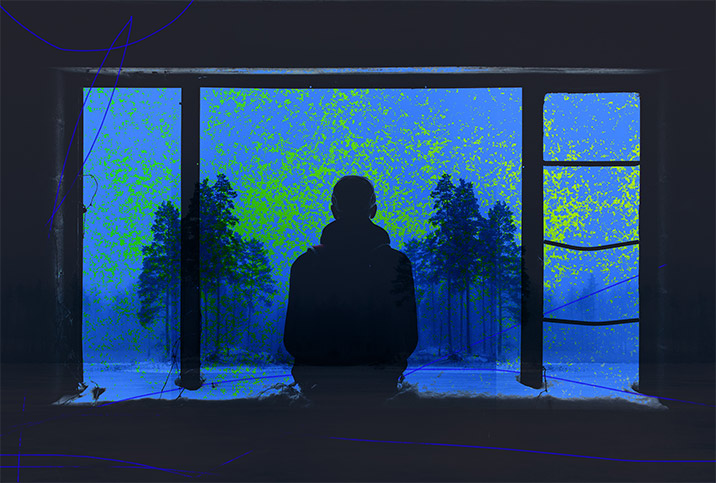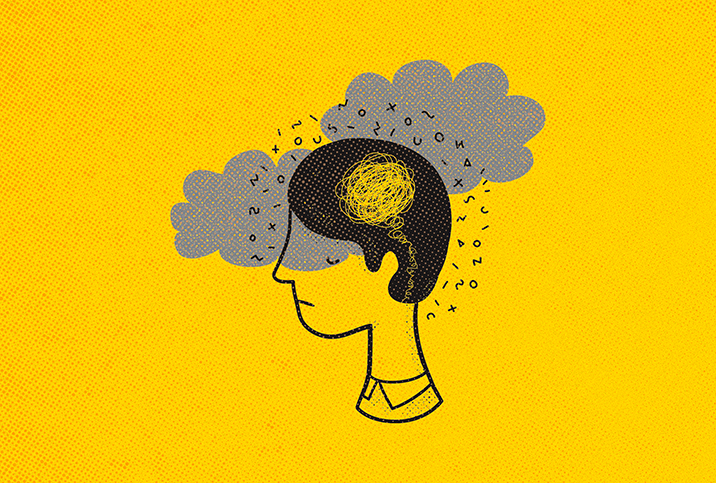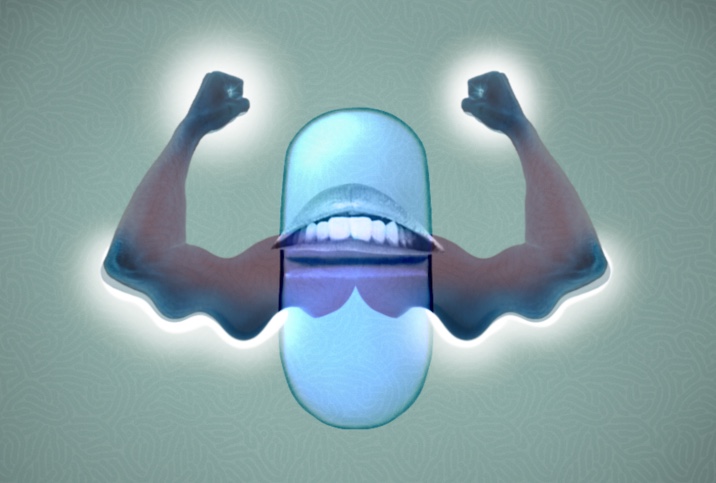Feeling SAD? That Might Be Seasonal Affective Disorder

Nights draw in, clocks change for fall and the days get shorter: The scene is set for people to cuddle through the winter months. However, research suggests the change in seasons can also precipitate the onset of depressive episodes, which can put a wedge in your plans for romance.
The condition is called seasonal affective disorder (SAD).
Amy Marschall, Psy.D., a licensed clinical psychologist in South Dakota, explained that SAD is coded as a major depressive disorder with seasonal-specific onset in the Diagnostic and Statistical Manual of Mental Disorders, Fifth Edition (DSM-5).
The most common form of SAD—sometimes called winter depression or "winter blues"—affects between 4 percent and 6 percent of people in the United States. Seasonal affective disorder is four times more common in women, and though teenagers can get SAD, it mostly affects people in their 20s. A less common variation of SAD, summer depression, begins in early summer when the light changes.
SAD affects people who get the brunt of severe winters, so it's more common the further north you live. People who live in Minnesota are about seven times more likely to be affected than someone living in Texas, for example.
Additionally, you're at greater risk of experiencing seasonal affective disorder if you have another mood disorder, such as bipolar disorder, or family members with mental health conditions, such as depression or schizophrenia.
The season that messes with your sex life
While no one knows exactly what causes seasonal affective disorder, researchers have put forth various theories. One is that a decreased exposure to sunlight affects our internal biological clock, which regulates mood, sleep and hormones.
Another theory rests on chemical imbalance. Serotonin has an important role in influencing your happiness and sexual behavior, increasing your learning ability and memory, and regulating temperature. Without sunlight, serotonin levels can fall, which can lead to anxiety and depression, and other mood changes.
A vitamin D deficiency due to lack of sunlight can also be a contributing factor to SAD because the vitamin boosts serotonin production. A lack of sunlight can also cause an overproduction of melatonin that affects sleep patterns and can cause people to feel sluggish and sleepy during the winter.
What we know for sure is that poor sunlight exposure can result in some people having frequent feelings of sadness and a disinterest in sex. These feelings can strain a relationship, especially if their partner is unaffected by the season.
Diagnosing SAD
A depressive episode includes at least five of the following symptoms:
- Depressed mood all or most of the day, every day or nearly every day
- Difficulty concentrating, focusing or making decisions
- Fatigue and energy loss daily or almost every day
- Feeling worthless, hopeless and/or guilty
- Increased or decreased appetite, with changes in weight not due to deliberate dietary changes
- Increased movement (agitation) or decreased movement
- Less interest or pleasure in activities you used to enjoy
- Sleeping significantly less or significantly more every day or almost every day
- Thoughts of death or suicide, with or without an active plan or intent to act on those thoughts
"My main symptoms are feeling sad, on the verge of tears for seemingly no reason, and depression that comes and goes starting in late fall," explained Janet Roberts, a communications specialist from Ottawa. "The onset always coincides with when the days start getting shorter. When I'm feeling this way, I don't have a lot of motivation to do anything."
She added that even though she knows exercise and being outside can help, it's a struggle to get out the door, especially when the weather is cold and gloomy.
"A mental health professional or physician can diagnose SAD based on the timing of the depressive episode and might do a more in-depth psychological evaluation to rule out another cause for the symptoms," Marschall noted. "It can also be helpful to get bloodwork done to rule out a medical cause for the symptoms."
"I was diagnosed eight years ago," Roberts said. "However, I suspected I had SAD long before that. My mother also suffers from the condition, so I was very familiar with the symptoms."
Light therapy treatment
When someone's depressive symptoms occur with the seasonal onset in the winter, the conclusion is that it's in one way or another due to decreased exposure to sunlight. Therefore, the solution is to get more sunlight, or something close to sunlight.
The principle behind light therapy is to use a light box or light therapy box, which has a bulb that mimics natural sunlight. People with SAD can sit in front of this light to give their brain exposure to light and, thus, decrease symptoms.
"Light therapy is a noninvasive way to treat depressive symptoms and can help those whose symptoms are specifically linked to the low light of winter," Marschall explained. "Light therapy can boost mood, increase concentration, increase energy levels and help with sleep."
Light therapy is best used in the morning to prevent interfering with sleep.
"If someone has suicidal thoughts as well as extreme fatigue, it is important to monitor their response to light therapy," Marschall cautioned. "Sometimes when someone is in a depressive episode, the return of energy can cause them to feel motivated to act on suicidal thoughts.
"If someone is experiencing these thoughts, it is important that they discuss their feelings with their treatment team," she continued. "Being in regular talk therapy can help because the therapist can help the person treat their suicidal thoughts and maintain an appropriate safety plan."
People with the following conditions may not be suitable candidates for light therapy:
- Retinopathy, a condition that can develop in anyone with type 1 or type 2 diabetes. Light therapy risks damaging their retina.
- Bipolar disorder. Bright light therapy can trigger hypomania or mania, uncontrolled boosts in mood and energy levels.
Certain antibiotics and anti-inflammatories can also make you more sensitive to sunlight.
"My family physician encouraged me to try light therapy and to exercise outside during daylight hours," Roberts said. "He told me to make a follow-up appointment if my depression was constant and continued for more than a couple of weeks. Only then did he want to consider prescribing me antidepressants. I found that I was successful in managing my symptoms by using a UV lamp—30 to 60 minutes each morning—and being active outside during the day."
She added that her employer purchased a UV lamp for use at the office, something they were happy to do when they saw her prescription.
If you or anyone you know thinks they may have seasonal affective disorder, seek professional help from a licensed mental health expert. The condition is very manageable when you take care of yourself, stick to your treatment plan and plan ahead in anticipation of the seasons changing.


















